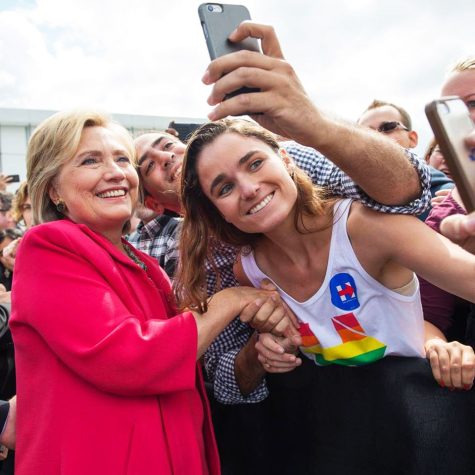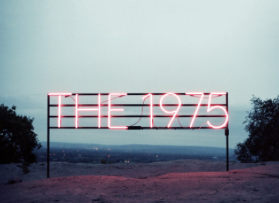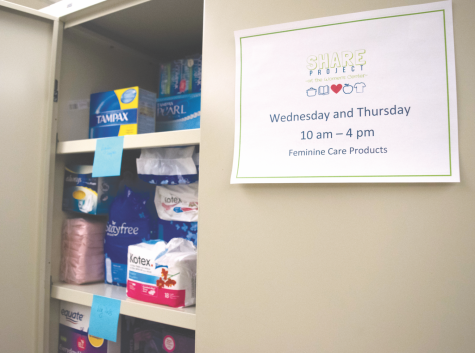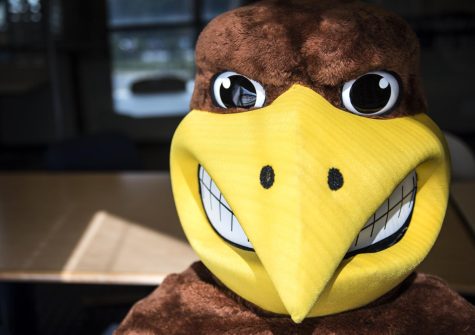Kent’s art scene fights for spot in new city vision
March 11, 2010
On a sunny afternoon in early March, a lengthy debate ensued inside the FJKluth Art Gallery. It was between the gallery’s owner, Frederick John Kluth, and Kent artist, Robert Wood.
Both men’s voices bounced off the hardwood floors of the gallery space and were absorbed by the framed paintings and racks of antique knick-knacks. The hot-button issue that had the guys so revved was how art, both the business and creative sides, fit into the Kent community landscape.
“I wanted to have a place to exhibit paintings,” Kluth said. “I thought people would work with me. But the normal gallery art plan doesn’t work in Kent.”
Kluth said he just wants to get decent art into the community, but it’s difficult because many artists aren’t cooperative.
“Some artists in Kent want me to clear my gallery, put only their stuff on the walls, have a big party, sell the paintings and give them the money,” Kluth said. “But artists in Kent don’t want to pay a commission. I cannot afford to do that.”
The debate picked up steam when Kluth asked Wood how much money Wood would give him if he sold one of his paintings for $1,000.
“Notice, how he avoids the question,” Kluth said.
“Well, you have to actually show the painting for at least a month, you have to have a real show” Wood rebutted.
“A month, that painting has been here for years,” Kluth replied.
“But it’s not on display, it’s covered up,” Wood pointed out.
“Well I’m not going to show it to anybody unless you give me a commission,” Kluth said.
The formal side of things
Kent’s main artery, Main Street, is a dichotomy of art.
On one side of the street there is McKay Bricker Framing, the Black Squirrel Gallery and Gifts, and Kent State’s Downtown Gallery. These are a part of the formal art scene, where student art, juried art shows and featured artists hold shows and sell their work.
Bob Mayfield, owner of McKay Bricker Framing, said the presence of art in Kent is an important part of the city’s identity and uniqueness.
“The more art we have in town the better,” he said. “There are certain perceptions of college towns, people expect to see something unique or different, not something that can be seen at the local mall.”
City Manager Dave Ruller agreed, calling Kent a “wide-angle city.”
“Art is a significant piece of the Kent experience,” Ruller said. “There are many degrees of art, from the corporate art to the indie art. It’s exciting and surprising at times.”
Ruller said art could be a great traffic generator, especially as Kent continues to expand with its redevelopment efforts.
“I always envisioned creating an arts district in downtown Kent,” Ruller said.
But Ruller admitted in the presence of Kent’s artistic image, there is still something missing.
“In the community conversation, you miss the voice of the arts,” Ruller said. “There is no collective voice. It is case-by-case, project-by-project. It doesn’t have the presence you’d expect because there is a lack of cohesion in the artistic community.”
The informal market
In an effort to make art accessible, some business owners are turning their walls into informal art galleries, offering free space for artists to show their work and possibly make some money.
Brad Powell, owner of Professors Pub, is one of those people on the other side of the artistic dichotomy in Kent.
“I wanted a way to give artists exposure,” Powell said. “We have the wall space available, and I prefer local art on the walls. There is no reason for beer banners and neon signs. People know we have beer here.”
Powell said his use of wall space for art is a subtle way to strengthen the community ties, make people feel welcome and help the economy.
“Everything under $100 always sells,” Powell said. “And if I’m not using some wall space, and someone can make a little money by using it, go for it. It helps with the clientele too, people feel like they are a part of the place.”
In order to expand his business and incorporate more artists’ work, Powell made a recent investment.
“I just bought a slide projector,” he said. “Now, artists can bring in a slide of their work and we can put in the carousel and rotate it. We can offer more exposure now without scratching the walls.”
Powell said he charges nothing to show artists’ work and he doesn’t take commission from sales. He just holds the money and calls the artist to let him or her know a sale has been made.
Mayfield sees what Powell is doing and respects it.
“I think it’s great what Brad is doing over there,” Mayfield said. “He’s looking at it from a community and a retailer perspective.”
A public canvas
A Paul McCartney quote spray painted alongside the railroad tracks under the Main Street Bridge greets people coming into the city with this message: “I worry that religions start wars.”
Recently, graffiti has been an issue in the city. According to recent Daily Kent Stater reports, Woody’s Music, along with university owned properties throughout the city, have been recent sites of graffiti, causing property damage and costing business owners to clean it up.
“It may be good art,” Mayfield said. “But it’s destroying property and that’s wrong. I wish we could catch the bastards doing it.”
Under the Haymaker Parkway Bridge and along the River Bend Park pathway, graffiti is the preferred décor, making the aged cement pop with color, political and social messages.
It begs the question: Does graffiti have a place in Kent?
Wood said yes, and that the graffiti problem is an exaggerated issue in Kent.
“For the record, the graffiti issue is amusing,” Wood said. “The largest amount of graffiti is in an innocuous place, under the bridge. I’d like to see more of it throughout the city.”
Ruller agrees with Wood’s sentiment, but he is taking a bipartisan approach to the issue.
“I wish the graffiti in Kent was more artistic,” Ruller said. “Look at the big city graffiti, it’s amazing. But we don’t condone damaging property, and you have to keep in mind that Kent is a family community.”
Ruller said it’s been talked about to create a spot for graffiti artists to make their own in the city, much like the rock on Kent State’s front campus. He pointed to ways Kent has tried to acknowledge graffiti artists and allow them to express freely.
“Two summers ago there was a graffiti competition at the Heritage Festival,” Ruller said. “If the right opportunity presented itself for a graffiti wall, we’re game for discussion.”
Wood said the idea of a public space for graffiti robs the action of its impact.
“Graffiti has a semiotic terrorist element,” Wood said. “It’s very symbolic. That’s the way it’s done, on the sly and where it’s not expected. It’s the nature of graffiti to be spontaneous and random. For a space to be administered would kill the spirit.”
A space is being considered for a commissioned work of public art in Kent. It happens to be the other side of the Haymaker Parkway Bridge, where the Farmers’ Market site is located. The Haymakers Farmers’ Market board is trying to secure a grant through the Ohio Arts Council to commission a mural depicting fruits and veggies to add some color to the market site.
Mayfield said that use of public space for art is entirely different than people with spray cans at three in the morning.
Contact features reporter Darren D’Altorio at [email protected].






















